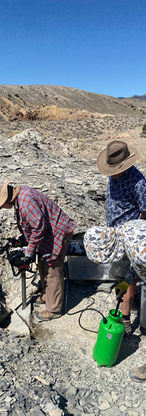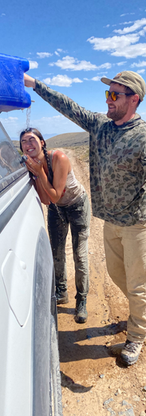top of page

Our research tends to focus on at least one of the three topics above. We are geochemists, and our tool of choice is heavy metal stable isotopes. We study heavy metal isotopes in a variety of settings and sample types. We study isotope cycles in settings that are very rare today but that were common on ancient Earth. We like studying old rocks because they hold the secrets of Earth's past. Among other things, these rocks can tell us about the history of molecular oxygen (O2) on Earth, and what role it played in the evolution of life.
bottom of page
























